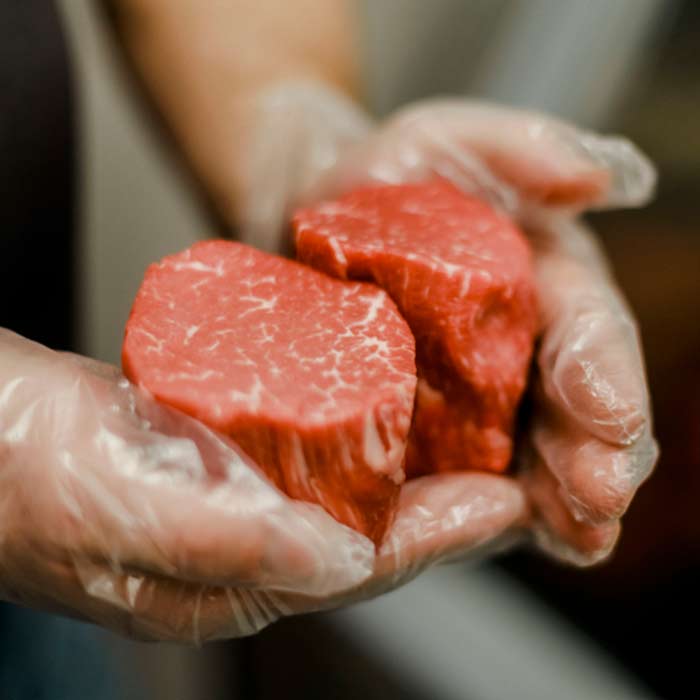The Nutritional Benefits of Incorporating Beef Tallow Into Your Diet Plan
Beef tallow has garnered focus for its distinct dietary account, which includes an abundant variety of important fatty acids and fat-soluble vitamins that can support total health. The implications of including this conventional fat into modern dietary methods invite a closer exam of its possible benefits and disadvantages.

Nutrient Profile of Beef Tallow
Beef tallow flaunts an abundant nutrient profile that makes it a valuable addition to numerous diet regimens. Mainly made up of saturated and monounsaturated fats, beef tallow is approximately 50-60% saturated fat, which contributes to its security at high cooking temperatures. This feature makes it an excellent option for frying and roasting, as it stands up to oxidation and preserves its nutritional quality.

In addition, beef tallow is without trans fats, making it a healthier option to many veggie oils. Its nutrient density not just offers power but additionally help in the absorption of nutrients from various other foods. As a standard cooking fat, beef tallow can improve the taste of meals while contributing to general nutritional intake, straightening well with numerous nutritional choices, consisting of low-carb and ketogenic diet regimens.
Wellness Benefits of Healthy Fats
Including healthy and balanced fats like those found in beef tallow into the diet can yield various health and wellness advantages that sustain total health. Healthy and balanced fats play an essential function in preserving cellular structure, hormonal agent manufacturing, and nutrient absorption. They are essential for optimal brain feature, as the mind is made up of virtually 60% fat, predominantly healthy fats.
One notable benefit of healthy and balanced fats is their payment to heart wellness (where to buy beef tallow). In contrast to out-of-date beliefs that all fats add to cardiovascular illness, studies indicate that healthy and balanced fats can boost cholesterol degrees and minimize inflammation, ultimately lowering the threat of heart problem. In addition, fats, such as those discovered in beef tallow, are a stable source of energy, providing continual gas for exercises and metabolic processes
Additionally, healthy and balanced fats can assist in weight monitoring by advertising satiety, which can aid lower overindulging. They also sustain the absorption of fat-soluble vitamins, consisting of A, D, E, and K, enhancing total nutrient uptake. By integrating beef tallow and other healthy and balanced fats into the diet, individuals can boost their nutritional account while delighting in a multitude of wellness benefits that cultivate long life and vitality.

Cooking With Beef Tallow
Food preparation with beef tallow offers a delicious and functional option for a range of cooking applications. This provided fat, acquired from beef, boasts a high smoke point of about 400 ° F(204 ° C ), making it perfect for frying, sautéing, and roasting - where to buy beef tallow. Its robust flavor improves meals, presenting an abundant, full-flavored quality that matches different components
Beef tallow is specifically fit for typical food preparation approaches, such as deep frying, where it can develop an excellent crust on vegetables and meats. The fat's ability to endure high temperatures without breaking down guarantees that Resources you accomplish crispy structures while retaining wetness within the food. In addition, its secure nature indicates it can be recycled several times for frying, making it an economical selection for home chefs and expert kitchen areas alike.
In baking, beef tallow can function as a replacement for butter or reducing, supplying a distinct depth of flavor to breads and pie crusts. It can be incorporated right into gravies and sauces, enriching their preference and providing a delicious mouthfeel. By welcoming beef tallow in your cooking repertoire, you can boost your meals while harnessing its dietary benefits.
Contrasts With Other Fats
When assessing food preparation fats, beef tallow stands out in comparison to various other common choices such as veggie oils, butter, and lard. Beef tallow is predominantly composed of monounsaturated and saturated fats, which are more steady at high temperature levels, making it less susceptible to oxidation than polyunsaturated veggie oils.
On the other hand, while butter includes useful nutrients like fat-soluble vitamins, it has a lower smoke point and can shed conveniently. Lard, similar to tallow, has a beneficial fat account yet may contain greater degrees of polyunsaturated fats, depending on the pig's diet plan.

Vegetable oils, frequently marketed as healthier options, can be extremely refined and consist of trans fats, which have been linked to unfavorable health and wellness impacts. The omega-6 fatty acids prevalent in many veggie oils can add to swelling when eaten in extra. Generally, beef tallow uses a special equilibrium of flavor, stability, and dietary advantages that can make it a preferable choice in numerous cooking applications.
Including Beef Tallow Into Cuisines
Beef tallow can be effortlessly integrated right into have a peek at these guys a selection of dishes, improving both flavor and nutritional worth. This provided fat, rich in monounsaturated fats and vitamins A, D, E, and K, works as a versatile cooking tool. It is excellent for high-heat applications such as frying and roasting, where it can impart a savory deepness to veggies, meats, and also baked products.
When sautéing, take into consideration making use of beef tallow rather of standard oils to raise the taste of stir-fries or veggie collections. For a heartier flavor, attempt incorporating it into mashed potatoes or luscious sauces, where its abundant consistency can develop a lavish mouthfeel. In addition, beef tallow can be utilized as a base for gravies, including a durable flavor account that matches a variety of recipes.
For those checking out baking, replacing beef tallow for butter or shortening in pie crusts can yield a flaky, delicious result. When cooking, brushing tallow on meats can boost wetness retention and provide a fascinating sear. By thoughtfully incorporating beef tallow right into your meals, you can appreciate not only boosted flavors yet also the impressive dietary benefits it supplies.
Conclusion
Including beef More about the author tallow into the diet regimen provides considerable nutritional advantages, including crucial fatty acids and fat-soluble vitamins that boost overall health and wellness. The favorable balance of hydrogenated fats contributes to boosted nutrient absorption and power security. Additionally, the cooking versatility of beef tallow makes it an attractive alternative for numerous cooking methods. Overall, the assimilation of beef tallow into meals can sustain wellness and health, making it a useful enhancement to a balanced diet regimen.
Largely composed of saturated and monounsaturated fats, beef tallow is roughly 50-60% saturated fat, which contributes to its security at high cooking temperatures. As a typical cooking fat, beef tallow can enhance the flavor of dishes while contributing to general dietary intake, lining up well with various dietary preferences, including ketogenic and low-carb diet plans.
Including healthy and balanced fats like those located in beef tallow right into the diet can generate many health benefits that sustain general health. By incorporating beef tallow and various other healthy fats right into the diet, people can enhance their nutritional account while enjoying a wide range of health benefits that foster durability and vitality.
When assessing food preparation fats, beef tallow stands out in contrast to various other usual options such as vegetable oils, butter, and lard.